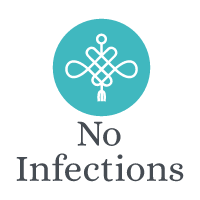Understanding the Current Mpox Outbreak in Africa: What You Need to Know
The world is once again on high alert as cases of mpox, previously known as monkeypox, are being reported in various countries. With the recent outbreak, it's crucial to stay informed and understand the risks, symptoms, and preventive measures associated with this virus.
What is Mpox?
Mpox is a viral zoonotic disease, meaning it can spread from animals to humans. The virus belongs to the same family as the variola virus, which causes smallpox, though mpox is generally less severe. It was first discovered in monkeys in the late 1950s, which is how it got its name, but the primary reservoir is believed to be rodents.
Human cases were first recorded in 1970 in the Democratic Republic of the Congo, and since then, the virus has primarily been reported in Central and West African countries. However, recent outbreaks have seen the virus spreading to non-endemic regions, raising global concerns.
The Current Outbreak: A Global Perspective
The current mpox outbreak has been notable for its spread beyond Africa, with cases reported in countries across Europe, the Americas, Asia, and Australia. This unprecedented global transmission has prompted the World Health Organization (WHO) and other health agencies to issue warnings and guidelines to curb the spread.
One of the key aspects of this outbreak is the pattern of transmission. Unlike previous outbreaks where the virus spread mainly through direct contact with infected animals, human-to-human transmission is now more common. This occurs through close contact with an infected person's skin lesions, respiratory droplets, body fluids, or contaminated materials like bedding.
Symptoms to Watch For
Mpox symptoms typically appear 5 to 21 days after exposure to the virus. Early symptoms are similar to those of the flu and may include:
- Fever
- Headache
- Muscle aches
- Backache
- Swollen lymph nodes
- Chills
- Exhaustion
Within a few days after the onset of fever, a rash often develops, usually starting on the face and then spreading to other parts of the body. The rash goes through several stages, from flat red spots to raised bumps, which then become filled with fluid. Eventually, the bumps crust over and fall off.
While most cases are mild and resolve without treatment, severe cases can occur, particularly in immunocompromised individuals, young children, and pregnant women.
Prevention and Treatment
There is no specific treatment for mpox, but the smallpox vaccine has been found to provide protection against it. Vaccination campaigns have been rolled out in several affected areas, focusing on those at higher risk, such as healthcare workers and close contacts of infected individuals.
To prevent the spread of the virus, the following measures are recommended:
- Avoid close contact with infected individuals: This includes avoiding physical contact with their skin lesions and contaminated materials.
- Practice good hygiene: Regular handwashing with soap and water or using an alcohol-based hand sanitizer can reduce the risk of transmission.
- Use personal protective equipment (PPE): For those caring for infected individuals, wearing gloves, masks, and protective clothing is essential.
The Role of Public Health Authorities
Public health authorities worldwide are closely monitoring the situation and providing guidance to both healthcare providers and the public. Increased surveillance, rapid case identification, and contact tracing are crucial in containing the outbreak.
In addition, health organizations are working to increase access to vaccines and antiviral treatments, particularly in regions with high case numbers. Public awareness campaigns are also being conducted to educate people about the risks and how to protect themselves.
Conclusion: Staying Informed and Vigilant
As the mpox outbreak continues to unfold, staying informed is key to protecting yourself and others. Follow the latest updates from reliable sources such as the WHO and local health departments, and adhere to recommended preventive measures.
While the situation is concerning, with the right precautions and public health interventions, the spread of mpox can be controlled, reducing the impact of this outbreak on global health.
Stay safe, stay informed, and take care of your health.
